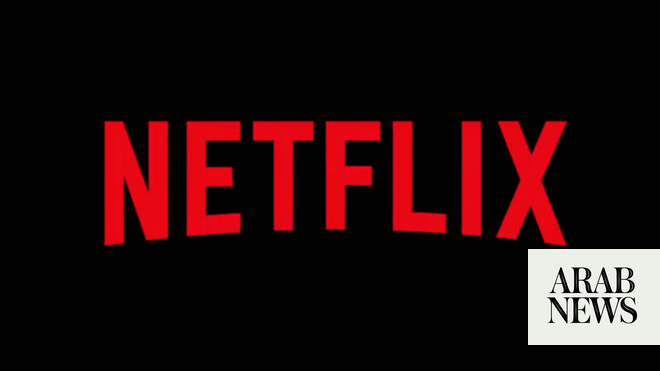Netflix’s head of sustainability talks company strategy and goals

[ad_1]
DUBAI: The entertainment sector is a significant contributor to the world’s carbon footprint, largely owing to production equipment such as generators on-set and travel for the cast and crew.
Each film production emits about 3,370 metric of carbon dioxide every shoot day, which is equivalent to more than 7 million miles driven by a car, according to the Sustainable Production Alliance.
It is why the SPA was founded in 2010 and now has members such as Netflix, Amazon Studios, Disney, Fox Corporation, NBCUniversal, Sony Pictures Entertainment, ViacomCBS and WarnerMedia.
Netflix, for example, made its first official sustainability hire in late 2020 when it appointed Emma Stewart to head the division.
Stewart, however, says that employees were already working on making the company more sustainable.
In the first six months of joining, she oversaw two annual carbon footprint reports that were audited by a third-party, designed science-based climate targets and had them approved by the leadership, and published the company’s first Environmental, Social and Governance, or ESG, report.
“That was the first six months and we have been going at speed since then,” she told Arab News.
The company takes responsibility for the emissions of every production that carries the Netflix brand on the service, whether it’s an original or not, “because anything less would be misleading to the consumer,” she said.
With this in mind, Netflix has two public climate targets; halve its emissions by 2030 and bring all residual emissions to zero by investing in the protection of nature.
Stewart, who said she’s as comfortable in the boardroom as in the scientific journals, believes her background and training in science are critical to designing impactful goals and strategies.
“It is clear in the scientific journals that this decade is when protection of nature, in particular, matters most to stabilizing the climate, because otherwise we lose one of our best weapons,” she said.
The first task Stewart undertook when she joined was data collection because that’s how “you learn a lot about where the opportunities are,” she said.
One of the findings was that 60 percent of the streamer’s emissions come from production, influencing its decision to adopt a three-pronged strategy; optimize, electrify, decarbonize.
If there is energy spent or fuel consumed in areas where it isn’t necessarily needed, then the company will try to find more optimal ways of doing so.
“The act of electrifying has a double benefit,” Stewart said.
Electric motors are three times or more efficient than fossil fuel-based motors, so electrifying results in better efficiencies and financial return, she explained.
She added: “Electricity grids tend to be a lot cleaner than burning of fossil fuel,” which means they are significantly better for the environment.
Transport, for example, is one area that’s “really ripe for electrification” and this is already evident in the passenger vehicle space, Stewart said.
However, there is room for growth when it comes to passenger vans and medium-duty vehicles that are heavily used in production because they haven’t been a top priority for auto manufacturers, she said.
Netflix is, therefore, “going directly to some of those suppliers and saying if you build it, we will rent it,” according to Stewart.
Electrification is also helpful in power supply units on set.
Diesel generators, which are typically used on sets, emit an estimated 700,000 tons of carbon dioxide emissions annually, according to data from climate tech company Third Derivative.
Netflix has now found “promising alternatives in the form of electric batteries,” which are powered by liquid hydrogen, Stewart said.
The streamer used these hydrogen fuel cells to power the “Bridgerton” set in the UK and mobile batteries in some locations in the US, UK and Canada, but these technologies weren’t built specifically for the entertainment industry.
So, Netflix partnered with The Walt Disney Company earlier this year to launch the Clean Mobile Power Initiative by Third Derivative, a climate tech accelerator founded by RMI and New Energy Nexus, to identify five to 10 startups working on zero-emissions technologies that could power production sets.
Both companies are funding the 18-month-long program and will also be involved in selecting and working with its participants to test the approaches.
“The technology worked but the supply wasn’t there, and we saw this is an industry-wide need, so we said we’re going to put our money where our mouth is,” she said.
The last step in Netflix’s strategy is to decarbonize whatever can’t be optimized or electrified.
Although aviation is a relatively small part of the company’s overall carbon footprint, Netflix is looking to purchase sustainable aviation fuel where it can and is an early adopter of the Sustainable Aviation Fuel, or SAF, credit, which enables eligible producers of SAF to claim a tax credit of $1.25 per gallon.
The sustainable fuel emits 90 percent less carbon and has been signed off on by environmental bodies such as the EDF and RMI, but it makes up for less than 5 percent of the world’s total fuel supply, Stewart said.
She added that Netflix is currently working to grow the supply of this fuel through the Sustainable Aviation Buyers Alliance.
“By testing and learning, we are finding that these cleaner technologies really work for our business, and we really need to work together as an industry to grow the supply of these technologies,” Stewart said.
Despite these efforts, cleaner alternatives aren’t available in every country. “Unlike many companies that have stationary facilities, it’s really hard for us to predict where we’re going to need this clean technology,” which is why “working with the supply chain is so important,” she said.
The content on Netflix can be divided into three categories said Stewart — self-managed, meaning it is Netflix’s own production crew; partner-managed, which means it’s produced by a company that has partnered with Netflix; and licensed.
“We have naturally spent most of our time standing up the architecture, apparatus and expertise to support the productions over which we had the most control,” Stewart added, referring to the company’s self-managed productions.
The company has also started to hire regional sustainability advisers, who have experience in the production industry combined with education or knowledge in sustainability. They are appointed by territory and oversee multiple productions at once.
Netflix’s content in the Middle East and North Africa is exclusively partner-managed, which means that sustainability practices aren’t as extensive in these productions.
They focus primarily on optimizing, instead of electrifying or decarbonizing.
However, Stewart said, “we are hearing sufficient demand from these partner-managed productions in the MENA region” and “that’s the next frontier for us.”
[ad_2]
Source: Arab News




